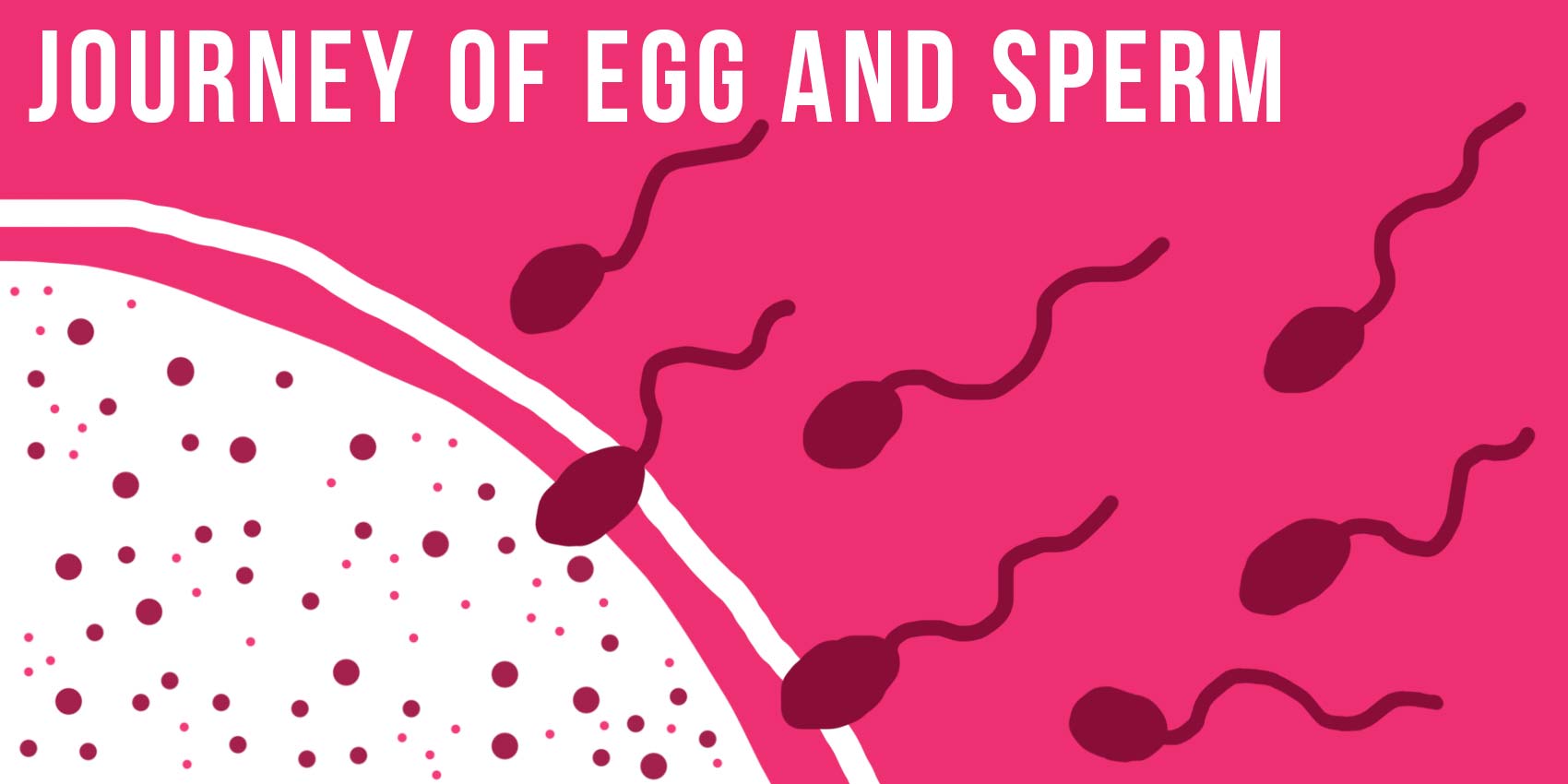07 Nov The journey of egg and sperm

There are a lot of casualties (meaning, deaths) among the sperm as they swim toward the egg. First, many get lost in the maze of a woman’s uterus where they also have to contend with acidic vaginal secretions. Only about 10,000 of the sperm overall will manage to reach the fallopian tube where the egg is hiding. This can take up to two hours since the sperm are so tiny. They have to guess which fallopian tube contains the egg (which way do I go now, door number one or door number two? Come out, come out, where ever you are—well, you can imagine the games they play in there.) Soon fluids in the reproductive tract excite the sperm so their tails become more powerful and a woman’s tract will also contract enough to push the sperm in the right direction. (See? Women are so helpful.)
Meanwhile, the egg is making its way down the fallopian tube to meet up with the sperm. When the egg and sperm meet the sperm cells actually release an enzyme that causes the breakdown of the protective layers of the egg. About 100 sperm sacrifice themselves during this process (can you say, “jump on the grenade?”) in order to forge a path for the one sperm that will make his way to the egg. After that lucky sperm penetrates the egg, a chemical reaction occurs within the egg so that no more sperm are allowed to enter (it’s seriously like winning the lottery).
When the egg and sperm meet (fireworks go off!) they make a zygote that continues to divide until it has about 100 cells formed and becomes known as a blastocyst. During this process the blastocyst is also making its way to the uterus where it will adhere to the endometrium (lining of the uterus) and begin growing in the warm, nutrient-rich fluid of the woman’s uterus. Nine months later, if all goes well, a baby is born either via the vaginal canal or through an incision made on the lower part of the stomach, called a cesarean, or C-section.
But not everything always goes so well. Unfortunately problems may develop. For instance, the egg could get stuck in the fallopian tubes, adhere to those walls and begin to grow, creating what is known as an ectopic pregnancy. The baby will not survive and the mother will most likely go into shock and begin bleeding. The cells must be removed in order to save the mother.
About one third of fertilized eggs fail to implant in the uterus and are lost. An imperfection in the amount of genetic material can also cause the embryo to be lost soon after implantation. But this can occur even before the first missed period, so that a woman will not even have known that she was pregnant.
A miscarriage is the spontaneous loss of a pregnancy before the fetus is 20 weeks old. It is also known as spontaneous or natural abortion. A woman is likely to experience cramping followed by heavy blood flow as the fetus and lining exit the woman’s body. After 20 weeks, a pregnancy loss is considered a pre-term delivery.
Full gestation (development) is considered to be between 37-40 weeks (more often 40). After 42, you are overdue!




Krystal
Posted at 15:55h, 04 NovemberVaginally, I just knew. I think my parents told me when I was younger.
Nate
Posted at 13:50h, 01 AprilVaginally. My mom told me. No it doesn’t matter
Its MY LIFE AS A SPERM
Posted at 14:49h, 14 MayHelped me in my project.Thanks!
anonymous
Posted at 14:10h, 09 Mayreally helpful for a project
thanks
Anonymous
Posted at 18:36h, 08 Mayvery helpful thanks
Kayla
Posted at 06:50h, 07 MayHelped a lot with hmwk.
Thanks